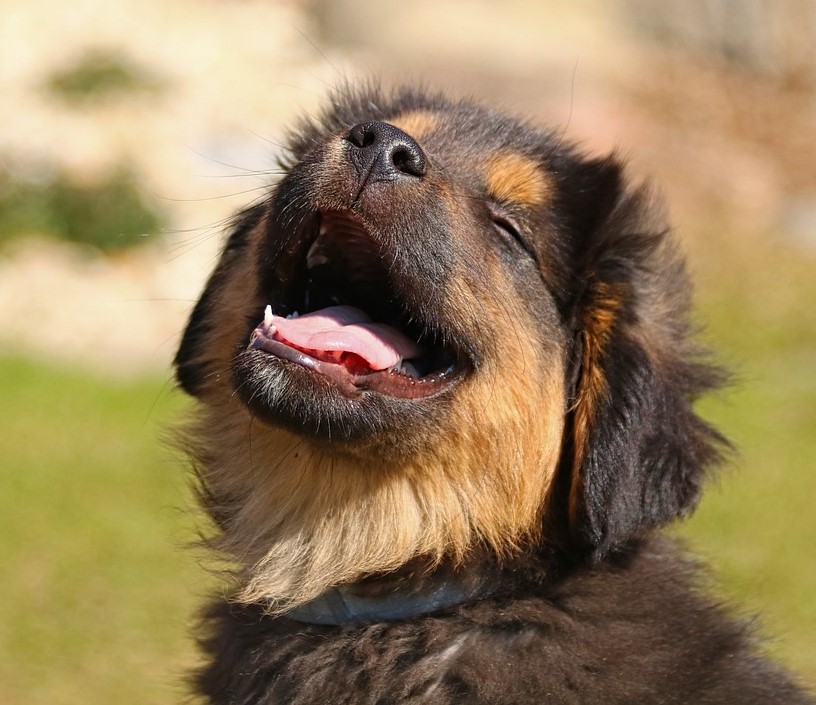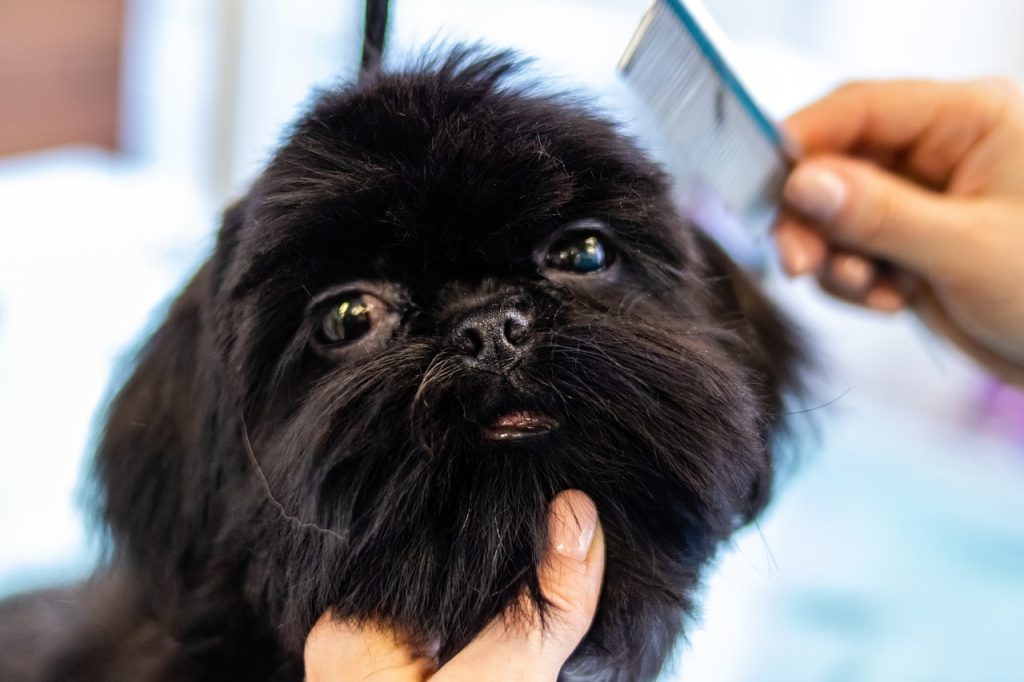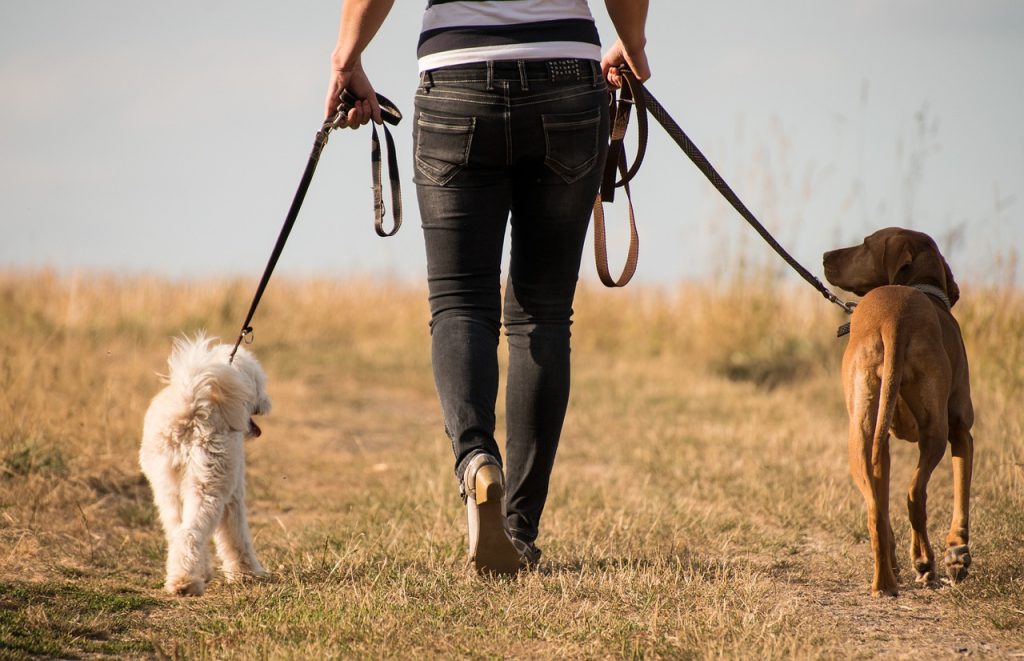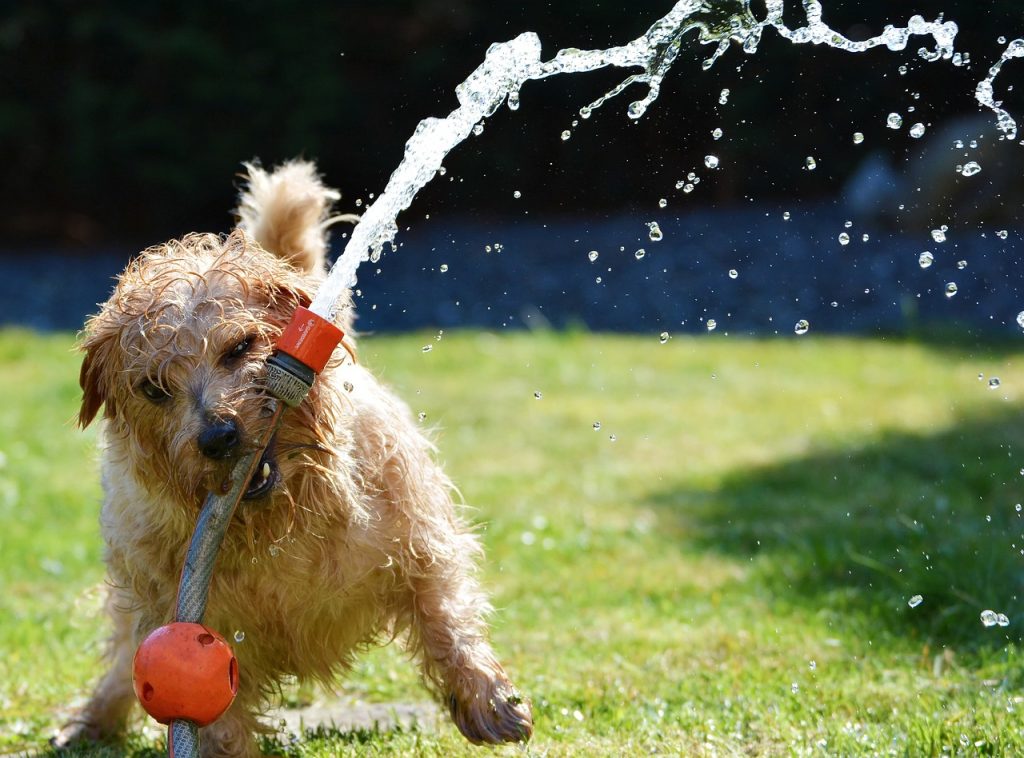Welcome to Our Dog Training Tips and Care Resources Hub

Welcome to our comprehensive resource hub designed to empower dog owners with valuable knowledge and insights into various aspects of dog training tips and care resources. Our curated collection of articles and resources aims to support you on your journey to becoming a well-informed and responsible dog owner. Whether you’re seeking guidance on puppy socialization, understanding your dog’s body language, or navigating common health issues, our resource hub provides expert advice and practical tips to help you make informed decisions and provide the best possible care for your furry companion. With a commitment to promoting positive relationships and fostering a deep understanding of canine needs, we invite you to explore our extensive library of dog training tips and care resources and embark on a fulfilling and rewarding journey with your canine companion.
Essential Dog Training Tips for Every Stage
Puppy Socialization
Puppy socialization is a critical process that involves exposing young dogs to a variety of experiences, people, and environments during their early developmental stages. This period, typically between 3 weeks and 4 months of age, is crucial for shaping a puppy’s behavior and temperament throughout their life. Proper socialization helps puppies become well-adjusted, confident, and friendly adult dogs by introducing them to different sights, sounds, smells, and sensations in a positive and controlled manner. It is essential for preventing fearfulness, anxiety, and aggression later in life and for fostering a strong bond between puppies and their owners.
Comprehensive Care Resources for Your Dog’s Well-being
Exercise and Activity Requirements for Dogs
Ensuring your dog gets enough exercise is crucial for their overall health and well-being. The amount of exercise needed varies depending on factors such as breed, age, size, and health status. As a general guideline, most dogs benefit from at least 30 minutes to 2 hours of physical activity each day. However, high-energy breeds or younger dogs may require more exercise to stay mentally and physically stimulated, while older dogs or those with lower energy levels may need less intense but still regular exercise. Tailoring the exercise routine to meet your dog’s specific needs ensures they receive adequate physical and mental stimulation, fostering a happy and healthy lifestyle. Regular walks, playtime, and interactive activities are excellent ways to meet your dog’s exercise requirements while strengthening the bond between you and your furry companion. Consulting with a veterinarian can provide personalized recommendations based on your dog’s characteristics and lifestyle.
Understanding Dog Breed Characteristics and Grooming Tips
Breed Characteristics
Understanding breed characteristics is essential for selecting the right dog for your lifestyle and ensuring a harmonious relationship between you and your furry friend. Different dog breeds have distinct traits, including energy levels, temperament, size, coat type, and exercise requirements. For example, herding breeds like Border Collies are known for their intelligence and high energy levels, requiring plenty of mental stimulation and physical activity to thrive. On the other hand, toy breeds like Chihuahuas may be more suitable for apartment living due to their small size and lower exercise needs. Additionally, some breeds may have specific grooming requirements, such as regular brushing for long-haired breeds like the Shih Tzu or frequent grooming for double-coated breeds like the Siberian Husky. By researching breed characteristics and considering your own lifestyle and preferences, you can find a canine companion that aligns with your needs and expectations, setting the stage for a fulfilling and rewarding relationship.

Grooming Tips for a Healthy Dog
Grooming plays a crucial role in maintaining your dog’s health and well-being, regardless of breed or coat type. Regular grooming sessions not only keep your dog looking clean and tidy but also help prevent skin issues, matting, and discomfort. Brushing your dog’s coat regularly removes loose fur, dirt, and tangles, while also distributing natural oils to keep the skin healthy. The frequency of brushing depends on your dog’s coat type, with long-haired breeds typically requiring daily brushing and short-haired breeds needing less frequent sessions. Additionally, regular baths with dog-specific shampoo help keep your dog’s skin clean and free from debris. Pay attention to other grooming tasks such as trimming nails, cleaning ears, and brushing teeth to ensure your dog’s overall health and hygiene. Finally, consider enlisting the help of a professional groomer for more intricate grooming tasks or if you’re unsure about handling certain aspects of grooming at home. By establishing a consistent grooming routine and providing regular care, you can help your dog look and feel their best while promoting their overall health and happiness.
Nutrition and Diet: Key Components of Care Resources
Proper Nutrition for Dogs
Proper nutrition is essential for your dog’s overall health and well-being. Providing a balanced diet that meets your dog’s nutritional needs based on their age, size, activity level, and health status is crucial. High-quality commercial dog food that is formulated to meet the Association of American Feed Control Officials (AAFCO) standards is generally recommended. Additionally, consider factors such as your dog’s breed, any food allergies or sensitivities, and any specific dietary requirements recommended by your veterinarian. Avoid feeding your dog table scraps or foods that are toxic to dogs, such as chocolate, onions, and grapes. Always ensure access to fresh, clean water, and monitor your dog’s weight and body condition to adjust their diet as needed.
Additional Dog Training Tips and Resources
Basic Health Care for Dogs
Regular veterinary check-ups, vaccinations, and preventive care are vital components of your dog’s overall health care regimen. Schedule annual wellness exams with your veterinarian to monitor your dog’s health and address any emerging health issues promptly. Stay up to date on vaccinations to protect your dog from common infectious diseases. Implement a regular parasite prevention program to safeguard against fleas, ticks, heartworms, and intestinal parasites. Maintain good dental hygiene by brushing your dog’s teeth regularly and providing dental treats or toys. Finally, be proactive in recognizing signs of illness or discomfort in your dog and seek veterinary care as needed.
Enhancing Your Dog’s Life Through Understanding and Care
Dog Park Etiquette
When visiting a dog park, it’s essential to observe proper etiquette to ensure a safe and enjoyable experience for everyone. Always supervise your dog and intervene if necessary to prevent conflicts or aggressive behavior. Keep your dog leashed until you enter the designated off-leash area and promptly clean up after them to maintain cleanliness. Pay attention to your dog’s behavior and body language, and be respectful of other dogs’ and owners’ boundaries. Avoid bringing food or toys into the park that may cause resource guarding or disputes among dogs. Finally, if your dog exhibits aggressive behavior or becomes overwhelmed, it’s best to leave the park to prevent any potential incidents.
Dealing with Separation Anxiety in Dogs
Separation anxiety is a common behavioral issue in dogs characterized by distress and anxiety when left alone. To address separation anxiety, gradually acclimate your dog to being alone through desensitization and counterconditioning exercises. Start by leaving your dog alone for short periods and gradually increase the duration over time. Provide interactive toys, puzzles, and long-lasting chews to keep your dog mentally stimulated and occupied while you’re away. Create a safe and comfortable space for your dog with access to water, toys, and a comfortable resting area. Avoid making a big deal out of arrivals and departures to prevent reinforcing anxious behavior. Consider consulting with a professional dog trainer or behaviorist for personalized guidance and support in addressing separation anxiety.
Understanding Canine Behavior for Better Training
Understanding canine behavior is essential for building a strong, trusting, and positive relationship with your dog. Dogs communicate primarily through body language, vocalizations, and behavior, so learning to interpret these cues can help you understand your dog’s emotions and needs. Familiarize yourself with common dog behaviors such as play, aggression, fear, and appeasement to recognize signs of stress or discomfort in your dog. Consider enrolling in a basic obedience class or working with a certified dog trainer to learn effective communication and training techniques. Remember that every dog is unique, so take the time to get to know your dog’s individual personality, preferences, and behavior patterns.
Housebreaking: Effective Potty Training for Dogs
Housebreaking, or potty training, is an essential aspect of teaching your dog appropriate elimination habits. Establish a consistent routine for taking your dog outside to eliminate, including after meals, playtime, and waking up from naps. Choose a designated elimination area in your yard and take your dog there on a leash to encourage them to go potty. Use positive reinforcement, such as treats and praise, to reward your dog for eliminating outdoors. Supervise your dog indoors and watch for signs that they need to go potty, such as sniffing, circling, or squatting. Clean up accidents promptly with an enzymatic cleaner to remove odors and discourage repeat accidents. With patience, consistency, and positive reinforcement, your dog can learn to reliably eliminate outdoors.
Crate Training: Creating a Safe Space for Your Dog

Crate Training
Crate training is a valuable tool for managing your dog’s behavior, providing them with a safe and comfortable den-like space, and aiding in housebreaking. Choose an appropriately sized crate that allows your dog to stand up, turn around, and lie down comfortably. Introduce the crate gradually, associating it with positive experiences such as meals, treats, and quiet rest time. Use a cue word or phrase to encourage your dog to enter the crate voluntarily, and never force them inside. Once your dog is comfortable in the crate, gradually increase the duration of confinement, starting with short periods and gradually extending them over time. Avoid using the crate as a form of punishment, and always ensure your dog has access to food, water, and appropriate toys while crated. With patience, consistency, and positive reinforcement, your dog can learn to see the crate as a safe and comforting space.
Leash Training for Safe and Enjoyable Walks
Leash Training
Leash training is essential for ensuring safe and enjoyable walks with your dog while promoting good behavior and obedience. Start leash training early, using a properly fitted harness or collar and a sturdy leash. Encourage your dog to walk politely on a leash by rewarding them for walking calmly beside you and ignoring distractions. Use positive reinforcement, such as treats and praise, to reward your dog for good leash manners. Practice walking in different environments and gradually increase the level of distraction as your dog becomes more proficient. Be patient and consistent, and avoid yanking or pulling on the leash, as this can cause discomfort and reinforce unwanted behaviors. With practice and positive reinforcement, your dog can learn to walk politely on a leash, making walks a pleasant and enjoyable experience for both of you.
Social Learning in Dogs: Understanding Canine Interaction
Social Learning in Dogs
Social learning in dogs is a complex process influenced by various factors such as genetics, environment, and socialization experiences. From a young age, puppies begin to learn from their littermates and mother through social interactions. These interactions teach them important social skills such as bite inhibition, communication signals, and play behaviors. As dogs grow and interact with other dogs in their environment, whether at dog parks, daycare facilities, or during walks, they continue to observe and learn from each other’s behaviors.
Dogs are highly attuned to human cues and can learn by watching their owners or other people. For example, a dog may learn to sit by observing another dog receiving a treat for sitting or by watching its owner give a verbal command and then reward the behavior. This observational learning allows dogs to acquire new behaviors without direct training and can lead to the spread of behaviors within a social group.
Social learning also plays a crucial role in shaping a dog’s response to various stimuli, including novel objects, sounds, and situations. Dogs may observe the reactions of other dogs or humans to these stimuli and adjust their own behavior accordingly. For instance, if a dog sees another dog approach a new object with curiosity and confidence, it may feel more inclined to investigate the object itself.
Understanding the mechanisms of social learning in dogs can help trainers and owners utilize this natural learning process to their advantage during training sessions. By providing opportunities for positive social interactions, exposing dogs to well-behaved peers, and modeling desired behaviors, trainers and owners can facilitate the development of appropriate social skills and behaviors in their canine companions.
How Dogs Communicate: Understanding Canine Language
Dogs communicate through a combination of vocalizations, body language, and olfactory cues, allowing them to convey their needs, emotions, and intentions to other dogs and humans. Vocalizations such as barking, growling, whining, and howling serve as audible signals that dogs use to express excitement, fear, aggression, or distress. However, much of a dog’s communication occurs through body language, which includes postures, facial expressions, tail wagging, and ear positioning. For example, a dog may wag its tail vigorously to signal happiness or excitement, while a tucked tail can indicate fear or submission. Similarly, raised hackles, a stiff body posture, or a direct stare may signal aggression or discomfort. Additionally, dogs rely heavily on their sense of smell to communicate, using scent marking to establish territory boundaries and identify individuals. Understanding and interpreting these various forms of communication is essential for building strong bonds with dogs, resolving behavioral issues, and ensuring positive interactions between dogs and humans.
Dog Body Language: Interpreting Canine Cues
Dog body language is a complex and nuanced form of communication that allows dogs to express their emotions, intentions, and reactions to various situations. Understanding canine body language is crucial for interpreting a dog’s mood and predicting its behavior. Some key elements of dog body language include posture, facial expressions, tail wagging, ear positioning, and overall body movement. For example, a dog with a relaxed body posture, loose tail wagging, and ears held in a neutral position is likely feeling calm and friendly. On the other hand, a dog that is standing stiffly, with raised hackles, a tense facial expression, and a low growl may be indicating aggression or discomfort. Tail wagging can also convey different messages depending on the context; while a broad wag usually indicates happiness, a stiff or slow wag may signal uncertainty or caution. By observing and interpreting these subtle cues, dog owners and enthusiasts can better understand their canine companions and build stronger relationships based on trust and clear communication.
Differences in Human and Dog Body Language
Human body language and dog body language have distinct differences that reflect their respective communication styles. While humans rely heavily on verbal communication, dogs primarily use nonverbal cues to convey their thoughts and emotions. Dogs communicate through a combination of body posture, facial expressions, vocalizations, and scent cues. For example, a dog’s wagging tail can indicate excitement or happiness, but the position and speed of the wag can also convey other emotions, such as fear or anxiety. Similarly, a dog’s body posture, such as standing tall with ears forward, may signal confidence or alertness, while cowering or lowering the body can indicate fear or submission. Understanding these subtle cues is crucial for interpreting a dog’s behavior accurately and responding appropriately. Additionally, it’s essential to recognize that dogs may interpret human body language differently from how humans intend it. For instance, direct eye contact in human communication signifies attentiveness or confidence, but in the canine world, prolonged eye contact can be perceived as a challenge or threat. By learning to recognize and respect both human and dog body language, pet owners can enhance their communication with their canine companions and strengthen their bond.
Different Styles of Dog Training: Choosing the Right Approach

Classical Conditioning
Classical conditioning is a foundational concept in dog training that involves pairing a neutral stimulus with a meaningful stimulus to elicit a specific response. In classical conditioning, dogs learn to associate two stimuli, such as a sound and food or a particular cue and a reward, leading to a predictable behavioral response. For example, by repeatedly pairing the sound of a clicker with a food reward, dogs learn to anticipate the reward when they hear the clicker, eventually exhibiting the desired behavior upon hearing the click. Classical conditioning can be used to create positive associations with various stimuli, helping to modify behavior, reduce fear or anxiety, and enhance learning. Through careful application of classical conditioning techniques, dog trainers can effectively shape canine behavior and improve the overall training experience for dogs and their owners.
Positive Reinforcement
Positive Reinforcement Training is a humane and effective method that focuses on rewarding desired behaviors with treats, praise, or toys to encourage repetition. This approach is based on the principles of operant conditioning, where the dog learns to associate a specific behavior with a positive outcome. According to the American Veterinary Society of Animal Behavior (AVSAB), positive reinforcement has been shown to enhance the bond between dogs and their owners while promoting long-lasting behavior changes. By using rewards to reinforce good behavior, positive reinforcement training encourages dogs to willingly engage in desired behaviors without fear or coercion. (Source: AVSAB – https://avsab.org/).
Clicker Training
Clicker Training is a popular form of positive reinforcement training that utilizes a small handheld device called a clicker as a marker to signal desired behaviors, followed by a reward. The clicker provides a precise and consistent way to communicate with the dog, marking the exact moment the desired behavior occurs. This method allows for clear communication between the dog and trainer, making it easier for the dog to understand which behaviors are being rewarded. Clicker training has been widely used in various training settings and has been shown to be effective for teaching new behaviors and modifying existing ones. (Source: Association of Professional Dog Trainers – https://apdt.com/).
Alpha Dog or Dominance-Based
Alpha Dog or Dominance-Based Training, once popularized by outdated theories of wolf pack hierarchy, emphasizes the owner’s role as the “alpha” or pack leader through techniques like leash corrections or physical manipulation. However, this approach has come under scrutiny in recent years, with many experts cautioning against its use due to its potential to induce fear, anxiety, and aggression in dogs. The American Veterinary Society of Animal Behavior (AVSAB) and other reputable organizations strongly advise against the use of dominance-based training methods and instead recommend positive reinforcement-based approaches that focus on building trust and cooperation. (Source: AVSAB – https://avsab.org/).
Relationship-Based Training
Relationship-Based Training centers on building a strong bond and mutual respect between the owner and dog through clear communication, trust, and understanding. This approach emphasizes the importance of creating a positive and supportive relationship between the dog and owner, which serves as the foundation for effective training. By focusing on building trust and cooperation, relationship-based training fosters a deep connection between the dog and owner, leading to better communication and improved behavior. (Source: The Humane Society of the United States – https://www.humanesociety.org/).
Balanced Training
Balanced Training incorporates elements of various training styles, including positive reinforcement and correction-based methods, to achieve desired results. This approach recognizes that different dogs may respond better to different training techniques and aims to tailor the training program to suit the individual needs of each dog. By combining positive reinforcement with appropriate corrections when necessary, balanced training seeks to provide a well-rounded and effective approach to dog training. (Source: American Society for the Prevention of Cruelty to Animals – https://www.aspca.org/).
Commonly Asked Questions About Dog Training and Care
How Can I Socialize My Puppy Properly?
Proper socialization is crucial for puppies to develop into well-adjusted adult dogs. To socialize your puppy effectively, expose them to a variety of people, animals, environments, and experiences in a positive and controlled manner. This helps them become comfortable and confident in different situations and prevents fear or aggression towards unfamiliar stimuli. Gradually introduce your puppy to new people, including children and strangers, as well as other dogs and pets, ensuring all interactions are positive and supervised. Take your puppy to different places such as parks, pet-friendly stores, and busy streets to expose them to various sights, sounds, and smells. Additionally, enroll your puppy in puppy socialization classes where they can learn to interact with other dogs in a safe and supervised environment. (Source: American Kennel Club – AKC https://www.akc.org/expert-advice/training/socializing-your-puppy/)
What Is the Best Way to Handle Puppy Biting and Chewing?
Puppy biting and chewing are natural behaviors, but they can become problematic if not addressed early on. The best way to handle puppy biting and chewing is through redirection and positive reinforcement. Provide your puppy with appropriate chew toys and encourage them to chew on these items instead of furniture or hands. When your puppy bites or chews on something they shouldn’t, redirect their attention to a chew toy and praise them for chewing on it. Consistency is key, so be patient and persistent in reinforcing desired behaviors while gently discouraging unwanted ones. Avoid using punishment or physical force, as this can escalate the behavior and damage the bond between you and your puppy.. (Source: American Society for the Prevention of Cruelty to Animals – ASPCA https://www.aspca.org/pet-care/dog-care/common-dog-behavior-issues/destructive-chewing)
How do I house train my puppy effectively?
House training, also known as potty training, is an essential aspect of raising a puppy. To house-train your puppy effectively, establish a consistent routine for feeding, potty breaks, and bedtime. Take your puppy outside to their designated potty spot frequently, especially after meals, playtime, and waking up from naps. Use positive reinforcement, such as treats and praise, to reward your puppy for going potty outside. Supervise your puppy closely indoors and watch for signs that they need to go potty, such as sniffing or circling. If accidents happen indoors, clean them up promptly using an enzymatic cleaner to remove odors and discourage repeat incidents. With patience, consistency, and positive reinforcement, your puppy will learn to associate going potty with the designated outdoor area. (Source: American Veterinary Medical Association – AVMA https://www.avma.org/resources/pet-owners/petcare/house-soiling)
What are the signs of a healthy dog?
Recognizing the signs of a healthy dog is essential for maintaining their overall well-being. Some common signs of a healthy dog include a shiny coat, clear eyes, and a healthy weight. Your dog should have a good appetite, plenty of energy, and show interest in activities they enjoy. Additionally, their gums should be pink and moist, and their breath should be relatively odorless. Regular veterinary check-ups are essential for monitoring your dog’s health and catching any potential issues early on. If you notice any changes in your dog’s behavior, appetite, or appearance, consult your veterinarian for further evaluation. (Source: American Kennel Club – AKC https://www.akc.org/expert-advice/health/how-to-tell-if-dog-is-healthy/)

How can I keep my dog mentally stimulated and engaged?
Keeping your dog mentally stimulated is crucial for preventing boredom and promoting overall well-being. Provide your dog with interactive toys, puzzle feeders, and enrichment activities to keep their minds engaged and prevent destructive behaviors. Incorporate training sessions into your daily routine to challenge your dog’s cognitive abilities and reinforce obedience commands. Engage in interactive games such as hide-and-seek or scent work to stimulate your dog’s natural instincts and provide mental exercise. Additionally, rotate your dog’s toys regularly to keep them interested and introduce new experiences such as walks in different environments or playdates with other dogs. By providing a variety of mental stimulation activities, you can keep your dog happy, healthy, and mentally sharp. (Source: PetMD – PetMD https://www.petmd.com/dog/wellness/evr_dg_games_to_play_with_your_dog)
What should I do if my dog shows signs of aggression or fear?
Signs of aggression or fear in dogs should be addressed promptly to prevent potential harm to people or other animals. If your dog displays aggression or fear-based behaviors, such as growling, barking, or lunging, consult with a qualified professional, such as a certified dog trainer or veterinary behaviorist. Avoid punishing or scolding your dog for their behavior, as this can escalate aggression and damage the bond between you and your pet. Instead, focus on identifying and addressing the underlying cause of the behavior through positive reinforcement training, behavior modification techniques, and desensitization exercises. With patience, consistency, and proper guidance, you can help your dog overcome aggression or fear and build a trusting relationship based on mutual respect and understanding. (Source: American Society for the Prevention of Cruelty to Animals – ASPCA https://www.aspca.org/pet-care/dog-care/common-dog-behavior-issues/aggression)
How Often Should I Take My Dog to the Vet for Check-Ups?
Regular veterinary check-ups are essential for maintaining your dog’s health and detecting any potential issues early on. In general, adult dogs should visit the veterinarian for a wellness exam at least once a year. Senior dogs and puppies may require more frequent visits, typically every six months, to monitor their health and address any age-related or developmental issues. Additionally, stay up to date on your dog’s vaccinations, parasite prevention, and dental care as recommended by your veterinarian.
Recommended Reading

Recommended Websites
The American Kennel Club (AKC)
The AKC website offers a wealth of information on dog breeds, training, health, and care. It provides breed-specific resources, training tips, and access to events such as dog shows and competitions.
Web Address: www.akc.org
Whole Dog Journal
The Whole Dog Journal offers evidence-based articles and reviews on various aspects of dog care, including training, nutrition, health, and behavior. With a focus on holistic and natural approaches, this website provides valuable insights and recommendations for dog owners looking to improve their pets’ well-being.
Web Address: www.whole-dog-journal.com
The Dogington Post
The Dogington Post is a comprehensive online resource for dog owners, featuring articles, news, and tips on dog health, training, and lifestyle. It covers a wide range of topics, from nutrition and grooming to travel and entertainment for dogs.
Web Address: www.dogingtonpost.com
The Humane Society of the United States
The Humane Society of the United States (HSUS) website provides resources and information on animal welfare, advocacy, and pet care. It offers articles, guides, and initiatives aimed at promoting the humane treatment of animals and responsible pet ownership.
Web Address: www.humanesociety.org
PetMD
PetMD offers a wide range of information on pet health, including articles, guides, and expert advice on various topics related to dogs’ well-being, from common health issues to preventive care.
Web Address: www.petmd.com
Book Reccomendations
“The Power of Positive Dog Training” by Pat Miller
Pat Miller, a renowned dog trainer and behavior consultant, introduces readers to the principles of positive reinforcement training. In this comprehensive guide, she explains how to use rewards, praise, and other positive techniques to teach dogs new behaviors, address problem behaviors, and strengthen the bond between dogs and their owners. With step-by-step instructions and real-life examples, Miller empowers dog owners to train their pets effectively while promoting trust and cooperation.
“Don’t Shoot the Dog!: The New Art of Teaching and Training” by Karen Pryor
Karen Pryor, a pioneer in the field of clicker training, presents a revolutionary approach to teaching and training based on the principles of operant conditioning. In this classic book, Pryor explores the power of positive reinforcement and provides practical techniques for shaping behavior, solving training challenges, and improving communication with animals. Drawing on her extensive experience as a marine mammal trainer, Pryor offers insights and strategies that can be applied to training dogs of all ages and breeds.
“Culture Clash” by Jean Donaldson
Jean Donaldson, a leading expert in dog behavior and training, delves into the complex relationship between humans and dogs in this thought-provoking book. Through insightful analysis and real-world examples, Donaldson explores the cultural differences and misunderstandings that often arise between species and offers practical advice for improving communication and enhancing the bond between dogs and their owners. “Culture Clash” challenges readers to rethink traditional training methods and embrace a more compassionate and understanding approach to dog training.
“The Other End of the Leash” by Patricia McConnell
In “The Other End of the Leash,” animal behaviorist Patricia McConnell explores the dynamics of human-dog relationships and offers valuable insights into canine behavior and communication. Drawing on scientific research and personal anecdotes, McConnell examines the ways in which humans and dogs interact and explains how subtle cues and body language can influence behavior. With practical tips and exercises, McConnell helps readers better understand their dogs’ needs and motivations, fostering empathy and understanding in the training process.
“Decoding Your Dog: Explaining Common Dog Behaviors and How to Prevent or Change Unwanted Ones” by American College of Veterinary Behaviorists
Written by a team of leading veterinary behaviorists, “Decoding Your Dog” provides a comprehensive guide to understanding and addressing common dog behaviors. From aggression and anxiety to house-training and chewing, this book covers a wide range of topics and offers evidence-based advice for managing and modifying behavior. With clear explanations and practical strategies, “Decoding Your Dog” empowers dog owners to better understand their pets and build stronger, more fulfilling relationships.
“How to Behave So Your Dog Behaves” by Sophia Yin
Dr. Sophia Yin, a renowned veterinarian and animal behaviorist, provides clear guidance on understanding and modifying your dog’s behavior. This book offers step-by-step instructions for addressing common behavioral issues using positive reinforcement techniques.
“Inside of a Dog: What Dogs See, Smell, and Know” by Alexandra Horowitz
Alexandra Horowitz takes readers on a fascinating journey into the sensory world of dogs, offering insights into how they perceive the world around them. This book provides a deeper understanding of canine cognition and behavior.
“Dog Sense: How the New Science of Dog Behavior Can Make You A Better Friend to Your Pet” by John Bradshaw
John Bradshaw, an expert in canine behavior, explores the evolution of dogs and their relationship with humans in this enlightening book. Drawing from scientific research, Bradshaw offers insights into dogs’ needs and motivations, helping readers become better companions to their pets.
“The Dog Listener” by Jan Fennell
Jan Fennell introduces the concept of “Amichien Bonding,” a gentle and holistic approach to dog training based on understanding canine instincts and communication. This book emphasizes building trust and mutual respect between dogs and their owners.
“Before and After Getting Your Puppy: The Positive Approach to Raising a Happy, Healthy, and Well-Behaved Dog” by Ian Dunbar
Dr. Ian Dunbar, a renowned veterinarian and animal behaviorist, provides practical advice for preparing for and raising a puppy in this comprehensive guide. From socialization and house-training to basic obedience, this book covers all aspects of puppy care using positive reinforcement techniques.